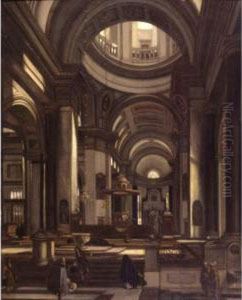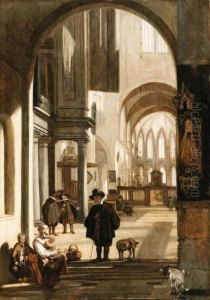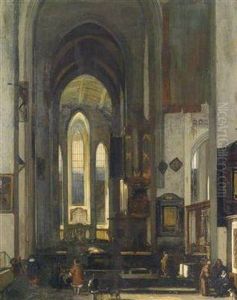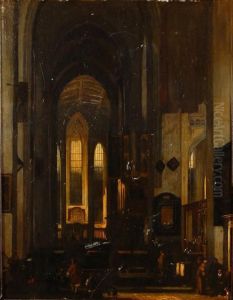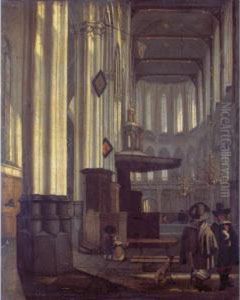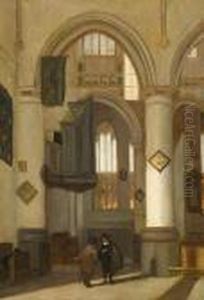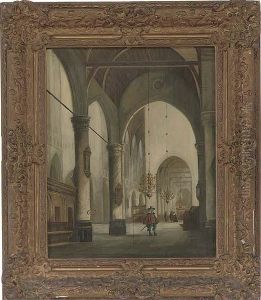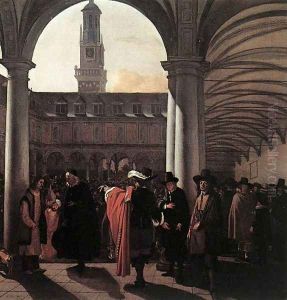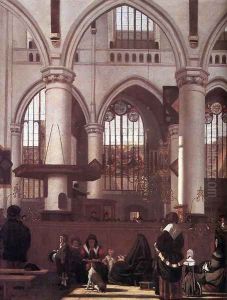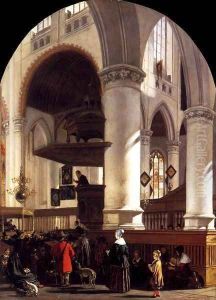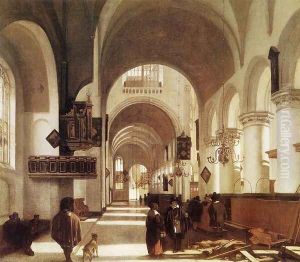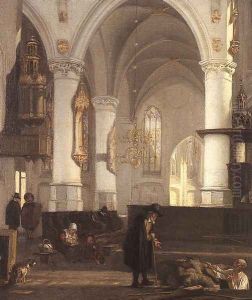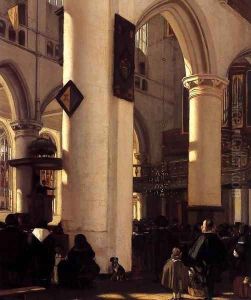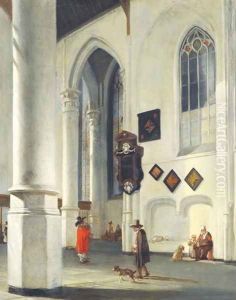Emanuel de Witte Paintings
Emanuel de Witte was a Dutch perspective painter who specialized in painting interior scenes of Dutch churches. Born in Alkmaar in 1617, de Witte is known for his skillful use of light and shadow to create depth and volume in his works, making him a prominent figure in the Dutch Golden Age of painting.
De Witte initially started his career by painting genre scenes, but he eventually found his niche in architectural painting. By the mid-1650s, he had begun to focus on painting church interiors, for which he is most famous today. These works often feature elaborate architectural perspectives and are populated by numerous figures, ranging from churchgoers to dogs, creating lively scenes within the serene settings of grand churches.
Unlike many of his contemporaries who painted church interiors in a purely topographical manner, de Witte's works often included human activity and everyday life, lending his works a narrative quality. He was particularly adept at rendering the play of light filtering through windows, illuminating the interiors with a warm, naturalistic glow. This attention to light effects can be seen in one of his most famous works, 'Interior of the Oude Kerk, Amsterdam', where the grandeur of the church is matched by the liveliness and variety of the human element.
Despite his success as an artist, Emanuel de Witte faced financial difficulties throughout his life. He was known to have moved frequently, leaving debts behind. His personal life was also marked by tragedy, including the death of a child and difficult relations with his wife.
Emanuel de Witte died in Amsterdam in 1692 under mysterious circumstances. According to some accounts, his death was a suicide, with the artist drowning after financial setbacks and personal misfortunes. Nonetheless, de Witte's legacy endures through his masterful church interiors, which continue to be admired for their technical proficiency and their vibrant portrayal of 17th-century Dutch society.



